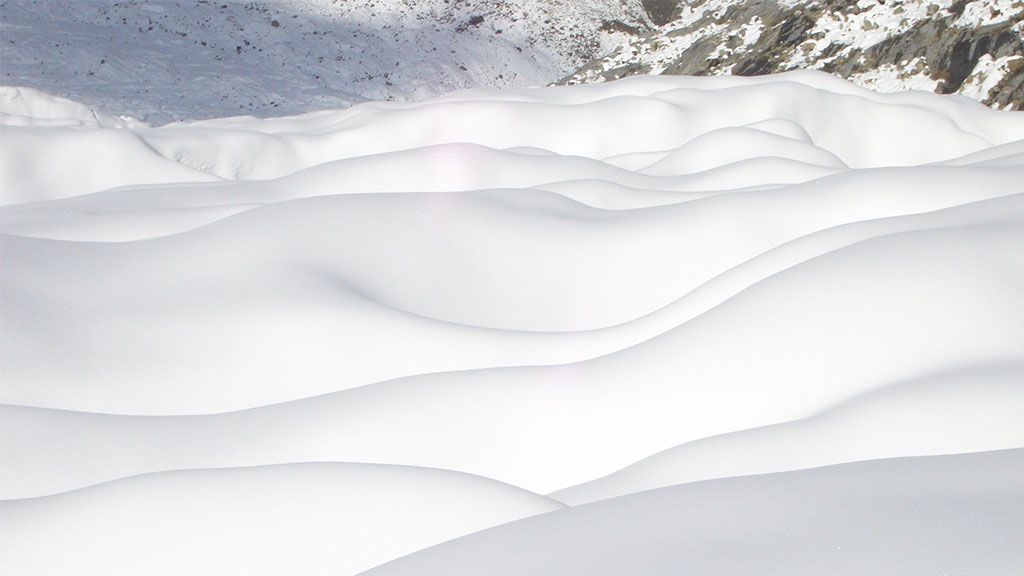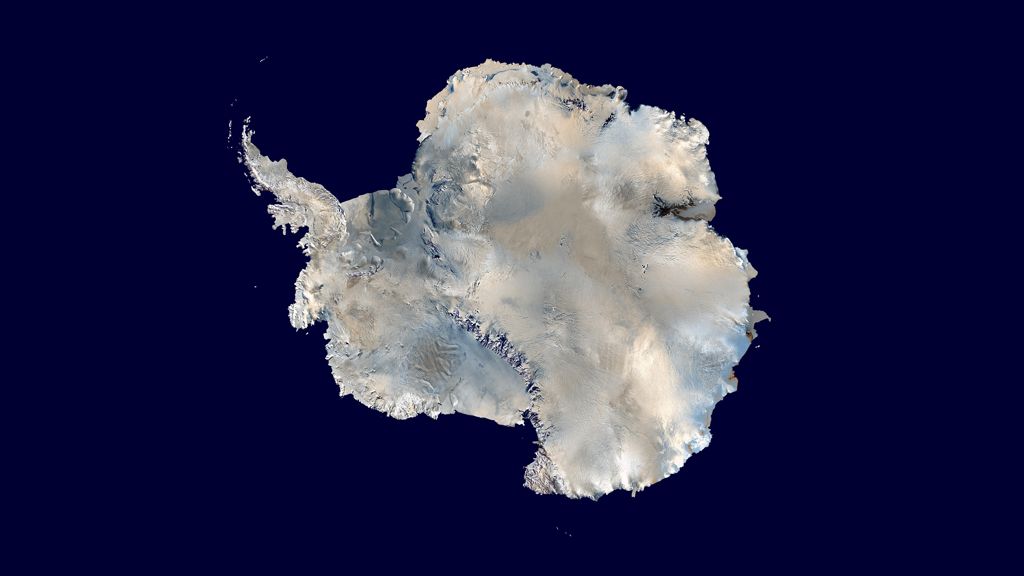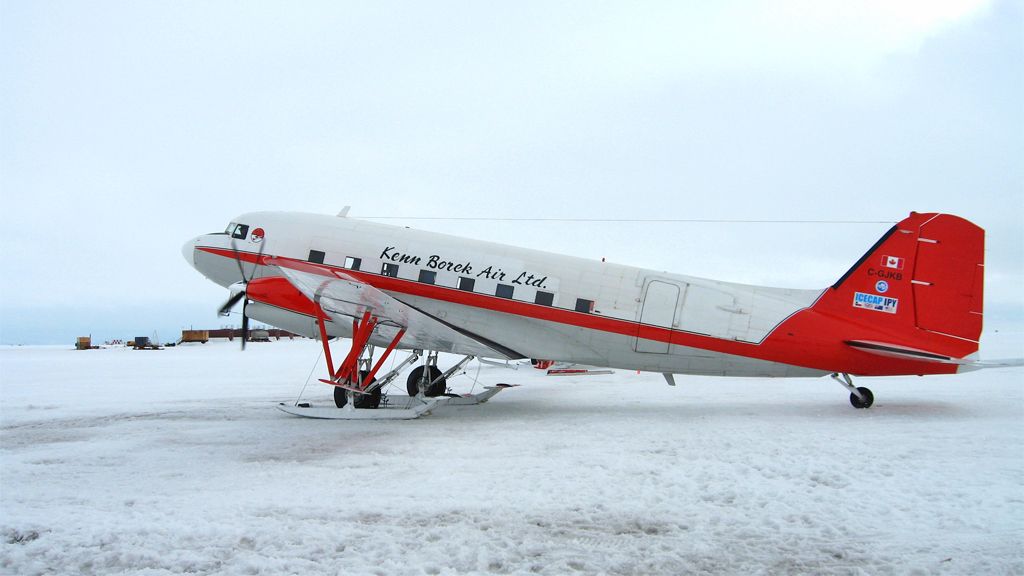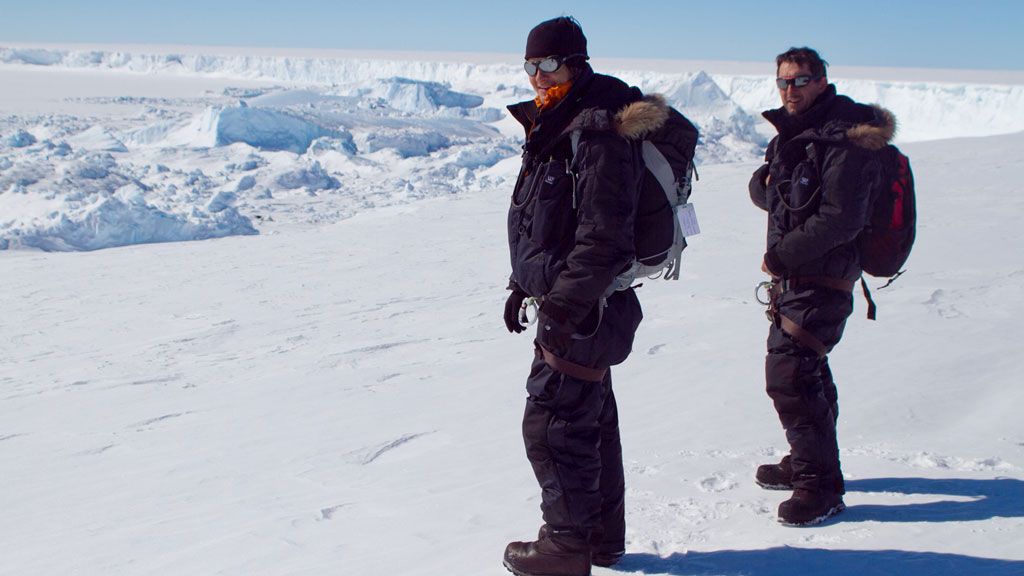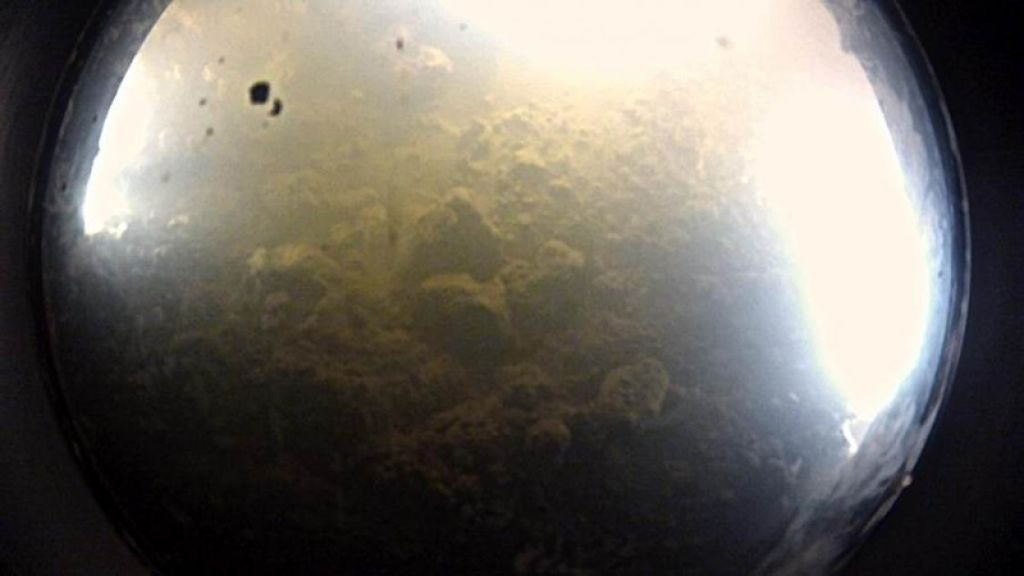Studying how ice sheets and climate affect one another over time
Snow dunes on a glacier surface
© Heiko Goelzer
Projecting the long-term consequences of ice loss from the planet’s ice sheets, which cover the landmasses of Greenland and Antarctica, is a scientific endeavour with important societal consequences, as Dr Heiko Goelzer from the Vrije Universiteit Brussel (VUB) in Belgium explains.
In this interview, he talks about the work he and his colleagues are doing under the iCLIPS project (Constraining long-term climate and sea-level projections using the Last Interglacial), which studies long-term interactions between ice sheets and climate with the aim of better understanding the processes at work. Dr Goelzer also speaks about his involvement in ISMIP6 (an Ice Sheet Model Intercomparison Project), an initiative that coordinates research efforts in the ice sheet modelling community.
Could you explain in more detail the objectives of the iCLIPS project?
The project’s goal is to improve long-term sea level and climate projections. It is a continuation of a number of research projects we did in collaboration with researchers from the Université catholique de Louvain (UCL) in Louvain-la-Neuve, Belgium. In these projects, we’ve been looking at projected changes for the Greenland and Antarctic Ice Sheets over the next 1,000 years.
On such a large timescale, it’s interesting to look not only at potential sea level rise that will result from melting ice sheets, but also at interactions between the ice sheet and the climate. Over a millennium, ice sheets can undergo considerable changes in both shape and extent. These changes have an influence on the climate in return, and give rise to feedbacks in the coupled system.
Why look at ice sheets over such a long timescale?
Global warming won’t stop at the end of this century - the time scale used in many model projections by the Intergovernmental Panel on Climate Change (IPCC) in their latest assessment report. And even if we as a species manage to stop climate warming at some point in the future, the ice sheets will continue to melt for some time to come, as there is a delay in how they respond to climate forcing (A paper from one of the earlier projects I was working on looks at how much sea level rise we’ve already committed to based on ice sheet mass loss projections). Furthermore, ice-climate interactions only become significant over longer time scales - after 200-300 years.
What approach did you take to putting your models together?
We wanted to improve our long-term sea level and climate projections. So at the beginning of the iCLIPS project, we decided to have a look into the past. In order to learn more about the ice sheets, the oceans, the climate, and how they interact with each other, we studied what happened during the last interglacial in Earth’s history, known as the Eemian (130,000 - 114,000 years ago).
The Eemian is a good period to use as a reference because more and more data from that period are becoming available - certainly more than from any earlier warm periods in Earth’s history. Thanks to proxy data found by analysing sediment cores and ice cores, scientists are able to make reconstructions of key climate indices (like sea-surface and air temperatures) as well as the growth and retreat of the planet’s ice sheets.
This year we published a study in which we used a model to look at how Earth’s climate responded to changes in the ice sheets during the Eemian. We’re also using the same kind of model now to make long-term projections for what might happen 1,000 years into the future as Earth’s climate continues to warm.
Were carbon dioxide (CO2) levels during the Eemian similar to today’s levels?
While we use the Eemian to get an understanding of how a warmer climate affected certain processes on the planet (in particular the ice sheets), this period in Earth’s history is not an exact analogue to present-day climate warming. During the Eemian, the amount of CO2 in the atmosphere wasn’t the main driver of climate change; the atmospheric CO2 concentration was mostly lower than levels during the pre-industrial era (before the late 18th century).
Climate warming during the Eemian was driven more by Earth’s orbital cycles (Milankovitch Cycles), which create changes in the distribution of insolation (solar energy) Earth receives from the Sun. During the Eemian, summers in the Northern Hemisphere received more insolation than they do today, which is one of the main reasons why the Northern Hemisphere ice sheets retreated significantly during this time in Earth’s history. The Antarctic Ice Sheet also retreated, but probably as a consequence of processes started in the Northern Hemisphere. However scientists are still debating this question.
Nonetheless, looking at the Eemian is interesting because atmospheric temperatures over Greenland are thought to have been 5°C warmer than they are today. We also know that mean sea level was 6 to 9 metres higher than it currently is. Given that with climate warming we’re expecting temperatures to rise above those seen during the Eemian before the end of the 21st century, looking at what happened to the ice sheets during this last interglacial period in Earth’s history can give us an idea of what to expect over the next few centuries.
Are you able to accurately reproduce past ice sheet behaviour with the models you’ve developed through iCLIPS?
The climate model we’re using in our work in the iCLIPS project is an intermediate complexity model, which is designed to look at large-scale changes over 1000-year timescales. The model is of lower resolution and uses some simplifications compared to what’s called a General Circulation Model (GCM). However our model is much more flexible and can be run over very long timescales. For example, when we did simulations of the Eemian with our model, we ran it over a period of 20,000 years. GCMs - like the ones used for 100 year long simulations in the latest IPCC report - simply cannot be run over such a long time scale.
That said, our ice sheet models have a very high spatial resolution, as small as 10 km by 10 km. This means we model changes in the ice sheet over individual 10 km by 10 km large square sections of the ice sheet surface. So the limiting factor in our simulations is not the accuracy of the ice sheet models, but the accuracy of the climate model, which is used to determine how warm it is over the ice sheet and how much rain or snow falls on its surface.
What an intermediate complexity model can help us do, however, is to better understand the dynamics and sensitivities of an ice sheet, as well as how it responds to climate forcings over longer timescales.
So the issue essentially comes down to how accurate you can make a model versus the number of years over which you can run that model?
That’s right. There exists a wide range of model types, where each one has its own strengths and weaknesses. Making long-term and coarse-resolution simulations is more about understanding in a general way how the system being modelled functions. It is important to use the model that best fits your objective. You must always be aware of the limitations of the model you are using. Our model, for instance, is not very accurate for the Tropics. But this is not of importance for the polar regions where the ice sheets are located.
You and your colleagues were also involved in the EU-funded ice2sea project, which sought to improve projections of sea level rise due to ice sheet and glacier melt over the next hundred years and contribute to the IPCC’s 5th Assessment Report. What kind of problems did you encounter when trying to put your models together?
The original idea for contributing to the ice2sea project and the IPCC’s 5th Assessment Report was to use outputs from a large ensemble of climate simulations and plug those into our ice sheet models. But as it turned out, when we started our modelling, it was too early to have the climate model results from the IPCC’s 5th Assessment Report. So we were only able to work with a few climate model runs from the IPCC’s 4th Assessment Report, which was released back in 2007. Most of the work we were involved with during ice2sea (including this study, this study and this study) was therefore focused on understanding the dynamics of ice sheets.
However since then, we’ve finally been able to use output available from climate models used in the IPCC’s 5th Assessment Report and feed them into our Greenland Ice Sheet model. From this, we were able to estimate the size of the surface mass balance of the Greenland Ice Sheet for the whole range of IPCC ensemble climate simulations in a recent study.
Why is understanding the surface mass balance of an ice sheet important?
Surface mass balance (how much ice is added to and lost from the surface of the ice sheet) is the most important of the two processes that determine how much ice will be lost from the Greenland Ice Sheet in the future. Ice mass is added to the ice sheet via snowfall. Thanks to gravity, ice flows towards the edge of the ice sheet, where it either melts at the surface or flows into outlet glaciers, which are in contact with the ocean, to produce icebergs that calve off into the sea.
Ice lost form the ice sheet via iceberg calving is the second process that affects ice mass balance of the Greenland Ice Sheet. For a long time, scientists have been very interested in getting a better understanding of how outlet glacier dynamics in Greenland influence the overall mass balance of the ice sheet. We managed to include these outlet glacier dynamics in our model. Together with an improved understanding of the surface mass balance of the ice sheet, this greatly improved our ability to project the Greenland Ice Sheet’s contribution to sea level rise over the next 100 to 200 years.
What our papers and other work from ice2sea shows (aside from the dominant role of surface mass balance in determining mass loss from the Greenland ice sheet in the future) is that the contribution of outlet glaciers to ice mass loss will decrease. In a warming world, more ice will be lost through surface melting before it can reach the coast. Outlet glaciers will retreat until they completely lose contact with the ocean.
You’re also involved in the ISMIP6 project. What are the objectives of this project?
The ISMIP6 project came out of two ice sheet modelling initiatives that contributed data to the IPCC’s 5th Assessment report: the European ice2sea project, and a US initiative, SeaRISE. The goal of ISMIP6 is to better coordinate worldwide ice sheet modelling initiatives in order to maximise the use of resources and capabilities so that we have even better results for the next IPCC report.
As I mentioned before, ice sheet projections so far have always lagged behind climate projections, because we need projections from climate models before we can feed this information into our ice sheet models. But for the 6th Assessment Report, we hope to include ice sheet projections using the latest climate projections that will have been done by that time. There are also plans to make coupled climate-ice sheet projections.
The purpose of the ISMIP6 project is to coordinate efforts to make this happen. We have recently submitted our proposal to CMIP (Coupled Model Intercomparison Project), the initiative that is organising climate ensemble projection for the IPCC reports.
Will it be difficult to coordinate the work of that many scientists?
The project does not advocate a unified model approach, where everyone works together on the same model (hence the name, Model Intercomparison Project). In the ice sheet modelling community, there are a lot of good models that have grown out of small groups studying certain aspects of ice sheets.
But compared to the climate modelling community, we ice sheet modellers are a bit behind in coordinating our efforts. Climate modellers have very well-established protocols on how to go about comparing their models. It would help the ice sheet modelling community a lot if we were able to reach that same level of cooperation - not only to improve projections, but also to make ice sheet modelling more efficient (by avoiding duplication of work, for example), and to make the models more robust.
With ISMIP6 now underway, the ice sheet modelling community is making a step forward. By following the example of the climate modelling community, we’re making an effort to more tightly coordinate our efforts.

Heiko Goelzer
Heiko Goelzer works as a post-doctoral researcher in the Earth System Sciences group and the Departement of Geography at the Vrije Universiteit Brussel (VUB) in Belgium. His research focuses on projecting the contribution of ice sheets to mean sea-level change and studying ice-climate interactions on timescales of hundreds to thousands of years.

